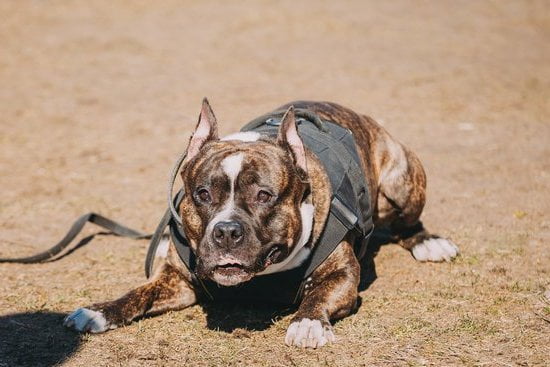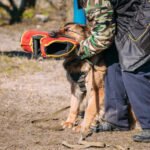Training a puppy to be an attack dog requires a significant level of responsibility and commitment. It is crucial to understand the gravity of this task, as owning an attack dog comes with a great deal of responsibility. In this article, we will discuss the steps and techniques involved in training your puppy to become an attack dog. From choosing the right puppy to advanced training techniques, we will cover all aspects necessary for successful training.
When embarking on the journey of training your puppy to be an attack dog, it is essential to choose the right breed with the suitable characteristics for this purpose. Selecting a breed known for its protective instincts and intelligence can greatly contribute to the success of your training efforts. Additionally, building a strong foundation through basic obedience training is crucial before advancing to more specialized skills like bite commands.
As you progress in training your puppy, it is important to strike a balance between teaching aggression and proper behavior. Socialization plays a key role in ensuring that your attack dog can interact safely with people and other animals while still being capable of protecting when needed. By following these guidelines and staying consistent in your approach, you can ensure that your puppy develops into a well-trained and reliable attack dog.
Choosing the Right Puppy
When it comes to choosing the right puppy for attack dog training, it is important to consider specific characteristics and breeds that are suitable for this type of work. While any breed can potentially be trained as an attack dog, certain breeds are known for their natural protective instincts and intelligence. German Shepherds, Belgian Malinois, Rottweilers, and Doberman Pinschers are some of the common choices for attack dog training due to their loyalty, strength, and trainability.
One important characteristic to look for in a puppy destined for attack dog training is a confident and assertive temperament. Puppies that exhibit fearfulness or excessive aggression may not be suitable candidates for this type of work. Additionally, the puppy should show a willingness to learn and respond well to commands. It is essential to start observing these traits from a young age as they will play a significant role in the success of your puppy’s training.
Furthermore, physical attributes such as size, strength, and stamina should also be considered when selecting a puppy for attack dog training. Larger breeds with muscular builds are often preferred for their ability to provide protection and deter potential threats effectively.
Remember that proper socialization, obedience training, and consistent guidance are crucial elements in shaping a puppy into a reliable attack dog. By carefully evaluating these characteristics and choosing the right breed, you can set a solid foundation for successful attack dog training.
| Characteristic | Example Breeds |
|---|---|
| Confident Temperament | German Shepherds, Belgian Malinois |
| Physical Attributes | Rottweilers, Doberman Pinschers |
Building a Strong Foundation
Training your puppy to be an attack dog requires a strong foundation in basic obedience. This serves as the building blocks for more advanced training and helps establish a strong bond between you and your furry companion. Basic obedience training not only teaches your puppy essential commands but also instills discipline and respect, which are crucial traits for an attack dog.
Start With Basic Commands
Begin by teaching your puppy basic commands such as sit, stay, come, heel, and down. Use positive reinforcement techniques like treats, praise, and toys to motivate your puppy to follow these commands. Consistency is key in obedience training, so make sure to practice these commands regularly until your puppy can perform them reliably in different environments.
Establish Leadership
Establishing yourself as the pack leader is essential when training an attack dog. Show confidence, assertiveness, and consistency in your interactions with your puppy. Use firm but positive tones when giving commands and always follow through with rewards or corrections. By establishing yourself as the leader, you can earn your puppy’s respect and trust, making it easier to guide them through more advanced training later on.
Focus on Communication
Effective communication is vital in obedience training. Pay attention to your body language, tone of voice, and timing when giving commands to ensure clear communication with your puppy. Be patient and understanding during training sessions, as puppies may take time to learn and respond to commands. Consistent practice and reinforcement will help strengthen the communication between you and your puppy as you progress towards more advanced training techniques on how to train your puppy to be an attack dog.
Advanced Training Techniques
When training your puppy to be an attack dog, one of the advanced techniques you will need to master is teaching your puppy to bite on command. This skill is crucial for ensuring that your dog can respond appropriately in potentially dangerous situations. Here are some steps on how to successfully train your puppy to bite on command:
- Start with basic obedience training: Before you can teach your puppy to bite on command, it’s important to establish a strong foundation of basic obedience training. Make sure your puppy understands and responds to commands such as sit, stay, and come reliably.
- Use a safe and appropriate toy: When teaching your puppy to bite on command, it’s essential to use a safe and appropriate toy for this purpose. Choose a toy specifically designed for training bite work, such as a tug toy or a sleeve.
- Introduce the command: Once your puppy is comfortable with the tug toy, introduce the command word for biting, such as “bite” or “attack.” Use this command consistently whenever you engage in playtime with the tug toy.
Training your puppy to bite on command requires patience, consistency, and positive reinforcement. It’s essential to seek professional guidance and assistance if needed to ensure that your training methods are safe and effective. Remember that the goal of teaching your puppy this skill is not to create an aggressive or uncontrollable dog but rather a disciplined and obedient companion who can protect when necessary.
Attack Training
Training your puppy to be an attack dog requires a significant level of dedication and responsibility. One of the key aspects of this training process is teaching your puppy to recognize threats and protect you and your property when necessary. This type of training should be approached with caution and should only be undertaken by experienced trainers or professionals.
To start the process of attack training, it is essential to expose your puppy to various stimuli that may trigger protective behavior. This can include introducing them to strangers in controlled environments or simulating scenarios where they need to defend against a perceived threat. By gradually exposing your puppy to these situations, you can help them develop the skills they need to protect you effectively.
It is crucial to remember that while attack training is important for certain situations, it should never compromise the safety of others. Proper control and supervision are essential when training your puppy to be an attack dog.
Additionally, always consult with a professional trainer or behaviorist who specializes in this type of training to ensure that you are following the appropriate methods and techniques. By taking these precautions, you can help ensure that your puppy develops into a well-trained and reliable protector.
| Training Tips | Importance |
|---|---|
| Expose your puppy to various stimuli | Helps develop protective skills |
| Consult with a professional trainer | Ensures proper techniques are used |
Socialization
Introducing Your Puppy to Different Environments
Expose your puppy to different environments early on to help them become accustomed to various stimuli. Take them for walks in busy areas, introduce them to different sounds and sights, and allow them to interact with a diverse range of people and animals. This exposure will help your puppy develop confidence and adaptability, reducing the chances of aggressive behavior stemming from fear or anxiety.
Positive Reinforcement for Social Interactions
Use positive reinforcement techniques to encourage good behavior during social interactions. Reward your puppy for remaining calm around strangers, reacting appropriately to other dogs, and following commands in public settings. By associating positive experiences with social interactions, you can reinforce the importance of proper behavior while maintaining their protective instincts.
Maintaining Boundaries
While socialization is important, it is also crucial to set boundaries for your attack dog puppy. Teach them when it is appropriate to be friendly and when caution is required. Establish clear guidelines for interacting with visitors at home, meeting new pets, and encountering unfamiliar situations. Consistent reinforcement of these boundaries will help your puppy navigate social situations effectively without compromising their protective instincts.
By striking a balance between aggression and proper behavior through socialization, you can ensure that your attack dog puppy becomes a well-rounded companion capable of discerning threats while maintaining self-control in various scenarios. Remember that socialization should be an ongoing process throughout your dog’s life to reinforce positive behaviors and prevent any negative tendencies from developing.
Mental Stimulation
Training a puppy to be an attack dog requires more than just physical training; mental stimulation is equally important in developing a well-rounded and alert canine companion. Here are some tips on how to keep your attack dog puppy engaged and sharp:
- Introduce interactive toys: Toys that require problem-solving skills, such as treat puzzles or toys that dispense treats when manipulated, can help keep your puppy mentally stimulated.
- Engage in training games: Incorporate obedience training into fun games like hide-and-seek with treats or teaching your puppy to find hidden objects based on scent.
- Explore new environments: Taking your puppy to different locations for walks or training sessions can expose them to new sights, sounds, and smells, keeping their minds active and alert.
In addition to these activities, mental stimulation for an attack dog puppy also involves incorporating obedience commands into everyday tasks. Practicing commands like “sit,” “stay,” and “heel” in various scenarios will not only reinforce their training but also challenge their cognitive abilities. Consistency is key when it comes to mental stimulation, so make sure to incorporate these activities into your daily routine.
Remember that mental stimulation should be balanced with physical exercise and rest to prevent your puppy from becoming overly stressed or anxious. By providing a stimulating environment and engaging in regular training sessions, you can help develop a confident and alert attack dog that is ready to protect you when needed.
The Importance of Consistency
Consistency is key when it comes to training your puppy to be an attack dog. It is important to establish a routine and stick to it to ensure that your puppy understands the commands and behaviors expected of them.
Consistency will help reinforce the training you have provided and build a strong foundation for your puppy’s development as an attack dog. By consistently practicing obedience training, advanced techniques, and attack training, you are setting your puppy up for success in their role as a protector.
Maintaining a bond with your puppy is crucial in the process of training them to be an attack dog. Building trust and a positive relationship with your puppy will not only improve their performance but also strengthen your connection with them.
Spend quality time with your puppy, provide them with affection, praise, and rewards for good behavior. This bond will create a sense of loyalty and respect between you and your puppy, making them more willing to work alongside you as a trained attack dog.
In addition to training exercises, consistency in providing mental stimulation is essential for the well-being of your attack dog puppy. Engage in interactive games, puzzle toys, and physical activities that challenge their mind and body.
Mental stimulation not only keeps your puppy alert and focused but also prevents boredom which can lead to destructive behavior. By consistently incorporating mental exercises into their routine, you are cultivating a well-rounded attack dog who is not only physically capable but also mentally sharp and agile.
Safety Measures
When considering how to train your puppy to be an attack dog, it is crucial to understand the legalities and responsibilities that come with owning such a powerful and potentially dangerous animal. In many places, owning an attack dog or training a dog for protection work is subject to specific regulations and laws. It is essential to research and comply with these regulations to ensure the safety of both your puppy and those around you.
One important legal aspect of owning an attack dog is liability. As the owner of a trained attack dog, you can be held responsible for any harm caused by your pet. This includes not only physical injuries but also property damage. It is critical to have the proper insurance coverage in place to protect yourself financially in case of any incidents involving your attack dog.
Furthermore, it is essential to understand the potential consequences of misuse or mishandling of an attack dog. Improper training methods or encouraging aggressive behavior towards people or other animals can result in serious legal repercussions. Therefore, it is vital to follow ethical training practices and always prioritize the safety and well-being of others when training your puppy to be an attack dog. Remember, with great power comes great responsibility, especially when it comes to owning a protective canine companion.
Conclusion
In conclusion, training a puppy to be an attack dog is a significant responsibility that requires dedication, commitment, and patience. It is essential to understand the gravity of this task and the impact it has on both the puppy and its surroundings. Choosing the right puppy with suitable characteristics and breeds is crucial in setting a strong foundation for training. Basic obedience training serves as the building blocks for advanced techniques, such as teaching your puppy to bite on command.
Advanced training techniques play a vital role in shaping your puppy into an effective attack dog. Guiding them to recognize threats and protecting you when necessary requires focus and consistency. Socialization is key in ensuring that your attack dog can balance aggression with proper behavior around people and other animals. Mental stimulation is also necessary to keep them engaged and alert, fostering their ability to respond swiftly to potential threats.
It is important to celebrate the progress made in training your puppy to be an attack dog while also acknowledging the ongoing commitment required. Maintaining consistency in training and nurturing a strong bond with your furry companion are essential for their development.
Understanding the legalities and responsibilities of owning an attack dog ensures not only their safety but also the safety of those around you. By following these guidelines and putting in the effort, you can successfully train your puppy to be an efficient and reliable attack dog.
Frequently Asked Questions
How Do I Train My Puppy to Be a Guard Dog at Home?
Training a puppy to be a guard dog at home requires a balanced approach. Start by socializing the puppy with various people and situations to build confidence. Introduce basic obedience training and gradually introduce guard-specific commands and scenarios. Positive reinforcement is key in shaping desired behaviors.
How Do I Make My Dog More Protective and Aggressive?
Making a dog more protective and aggressive should not be the goal for most pet owners. Instead, focus on creating a well-rounded, confident, and obedient companion through proper training, socialization, and leadership. Encouraging natural protective instincts without promoting aggression is essential for a healthy relationship.
How Do I Teach My Dog to Bark Aggressively?
Teaching a dog to bark aggressively should not be the aim of training. Excessive or aggressive barking can be seen as a nuisance or problematic behavior in many situations. Instead of encouraging aggressive barking, focus on teaching your dog appropriate cues for alerting you without escalating into excessive noise or aggression.

Welcome to the blog! I am a professional dog trainer and have been working with dogs for many years. In this blog, I will be discussing various topics related to dog training, including tips, tricks, and advice. I hope you find this information helpful and informative. Thanks for reading!





